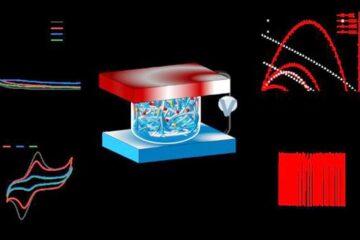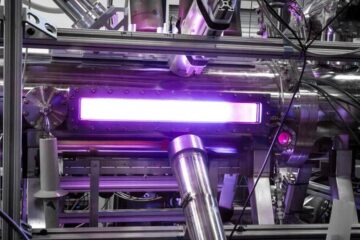Researchers at Freie Universität Berlin have discovered a novel kind of learning gene

Their discovery suggests a novel kind of molecular learning mechanism. The study, published in the journal “Current Biology”, may help understanding the molecular processes underlying addiction.
For the last 80 years, science has distinguished two forms of associative learning: classical and operant conditioning. Classical conditioning denotes the kind of learning made famous by the Russian physiologist I.P. Pavlov, who trained dogs to salivate in response to the tone of a bell by always feeding the animals after he rang the bell. About 20 years later, the American psychologist B.F. Skinner trained rats to press a lever for a reward – operant conditioning.
Until now, it was assumed that these and many other types of learning relied on a set of well-known learning related genes. This assumption has now been questioned by the results from the scientists in Berlin. Brembs and his team at the Institute for Biology of the Freie Universität Berlin studied the learning performance of genetically engineered fruit flies in a flight simulator.
In the first experiment, the cylindrical drum within which the fly was flying was illuminated alternatingly in blue and green. With, say, blue illumination the flies also received an aversive heat stimulus. This treatment resulted in an avoidance of the color blue.
In a second experiment, the colors and heat were coupled to the turning attempts of the fly such that the blue illumination and heat was always turned on when the fly was attempting to turn right. Thus, similar to Skinner's rats, the flies had the opportunity to actively learn to behave in a certain way – in this case to turn left to avoid being heated.
In a third experiment the scientists tested purely operant learning (behavioral learning). This was done by removing the color stimulus. The fly was still heated when it attempted to turn right, but now there were no colors presented any more.
Flies where the well-known group of learning genes had been manipulated failed miserably in the first to experiments. However, in the third experiments, they learned even better than normal flies.
So far it was assumed that all forms of associative learning rely on the already known set of learning related genes, so Brembs: “Our studies show that the prominent learning genes are not playing any role in purely behavioral learning. Our results suggest that Pavlovian learning somehow suppresses behavioral learning.”
Importantly, genetically engineered flies in which the enzyme “protein kinase C” was inhibited, showed an impairment in the purely behavioral third experiment, while they were normal in the other two learning tasks. Brembs posits that the operant, protein kinase C-dependent learning mechanism also underlies so-called “habit formation”, which is implied in the acquisition of a drug-taking habit. If that were the case, the development of compulsive drug-taking could be slowed down or even prevented by medication interfering with the protein kinase C pathway.
Whether the same molecular learning mechanisms discovered by Brembs in flies also exist in mammals and maybe even in humans, is still unknown. “To find this out, one would need equivalent studies in mice or rats.”
For further information please contact:
Björn Brembs
bjoern@brembs.net, http://brembs.net
Institut für Biologie – Neurobiologie
Freie Universität Berlin
Königin-Luise-Strasse 28/30, 14195 Berlin, Germany
+49-(0)308-385-5050 (lab+office), +49-(0)308-385-5455 (fax)
Media Contact
All latest news from the category: Life Sciences and Chemistry
Articles and reports from the Life Sciences and chemistry area deal with applied and basic research into modern biology, chemistry and human medicine.
Valuable information can be found on a range of life sciences fields including bacteriology, biochemistry, bionics, bioinformatics, biophysics, biotechnology, genetics, geobotany, human biology, marine biology, microbiology, molecular biology, cellular biology, zoology, bioinorganic chemistry, microchemistry and environmental chemistry.
Newest articles

Superradiant atoms could push the boundaries of how precisely time can be measured
Superradiant atoms can help us measure time more precisely than ever. In a new study, researchers from the University of Copenhagen present a new method for measuring the time interval,…

Ion thermoelectric conversion devices for near room temperature
The electrode sheet of the thermoelectric device consists of ionic hydrogel, which is sandwiched between the electrodes to form, and the Prussian blue on the electrode undergoes a redox reaction…

Zap Energy achieves 37-million-degree temperatures in a compact device
New publication reports record electron temperatures for a small-scale, sheared-flow-stabilized Z-pinch fusion device. In the nine decades since humans first produced fusion reactions, only a few fusion technologies have demonstrated…





















